Merkelbach & Wick
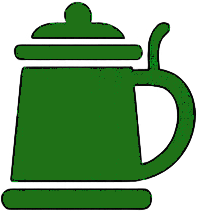 producer/manufacturer
producer/manufacturer
Merkelbach & Wick.
Head Office: Bahnstraße 9, which was renamed Westerwaldstraße 9, Grenzhausen, Hesse-Nassau, Prussia. (now Höhr-Grenzhausen, Rhineland Palatinate).
Steingut- und Steinzeugfabrik, Kunsttöpferei sowie Zinngiesserei / Earthenware & stoneware art pottery as well as pewterer.
Founded in 1872 by Friedrich Wilhelm Merkelbach II (b.1840 - d.1896) & Sculptor & Modeller, (Johann) Georg Peter Wick (b.1837 - d.1914). They became the first company to produce ivory stoneware (Elfenbeinsteinzeug) in 1882/3. This proved very popular in North America and by 1890, more than half of their production was exported to that part of the world. They were also a significant supplier to
Hauber & Reuther supplying them with their ivory stoneware requirements between 1886 - 1897. In 1902 & 1903, changing fashions required them to concentrate on their Jugendstil range, so Peter Behrens, Albin Müller and Henry van de Velde were recruited to produce new designs. They employed approximately 50 employees around this time. (Johann) Georg Peter Wick's son, (Konrad) Ludwig, joined the company in 1895 and presumably took over joint ownership with his father, upon the death of his father-in-law Friedrich Wilhelm Merkelbach II. (Konrad) Ludwig Wick transferred all his liabilities as a partner in the company to his wife Emma in 1911. In 1920 they merged Merkelbach, Stadelmann & Co*, together with Merkelbach & Wick, to form
Wick-Werke, Vereinigte Fabriken Merkelbach & Wick u. Merkelbach, Stadelmann & Co.
*Merkelbach, Stadelmann & Co. Gartenstraße 3, Grenzhausen, was founded by Friedrich Wilhelm Merkelbach II, Theodor Stadelmann and Julius Schröder, around 1867 - 1872, solely as a manufacturer of grindstones and whetstones. By 1910 the company was owned by (Konrad) Ludwig Wick, but in 1912 was transferred to his wife, Emma
The following designers either designed the pottery for Merkelbach & Wick, or put their decoration on standard pieces.
Peter Behrens (Johann Wilhelm) Karl Görig Ludwig Hohlwein Patriz Huber Carl Moos Albin Camillo Müller Franz Ringer Henry Clemens van de Velde
Reference:
Porcelain Marks & More 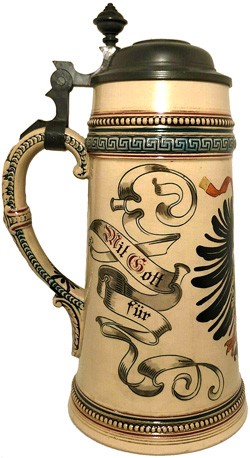
Right hand view of the stein shown centrally.
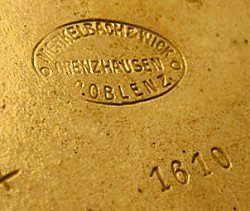
Unusual Impressed mark
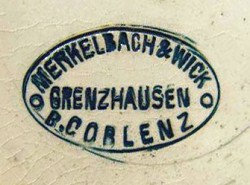
Very rare ink stamp
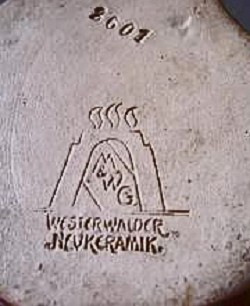
Impressed mark. M&W,G "Westerwalder Neukeramik", on the base of the Satyr stein #2601, attributed to Peter Behrens.
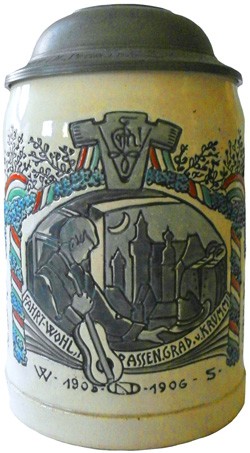
Unusual student stein, dated Winter Semester 1905 - 1906
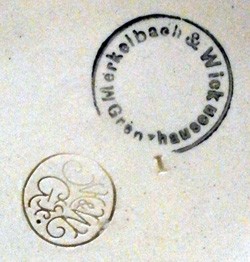
Extremely unusual ink stamped base mark in conjunction with the normal impressed mark, on the base of the student stein above.
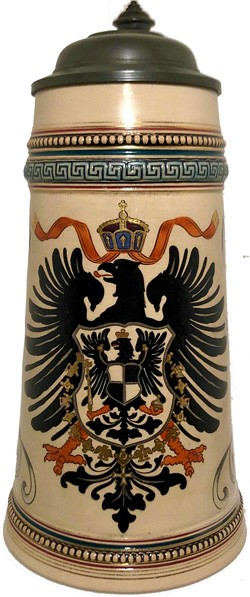
2 litre, M&W #1705 showing the coat of arms of Kaiser Wilhelm II, together with the motto, "Mit Gott für Kaiser und Reich".
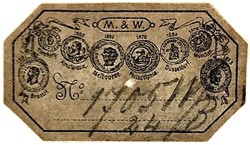
In addition to the normal Merkelbach & Wick roundel, the stein above also had this paper label attached to the base, with handwritten "1705" & 2L.
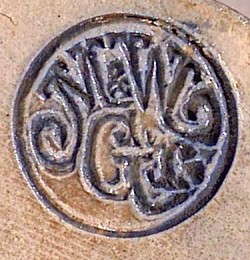
Impressed roundel (wooden punch). c.1879 - 1921.
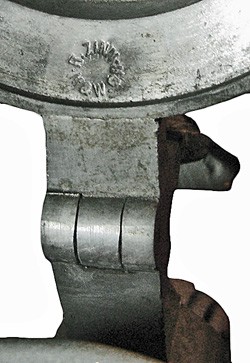
Merkelbach & Wick, Grenzhausen, Rein Zinn touchmark on the underside of the lid rim, adjacent to the tang of the hinge assembly
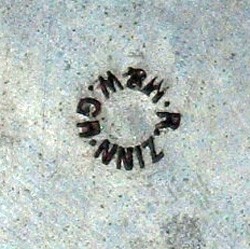
Merkelbach & Wick, Grenzhausen, "R. Zinn" (Pure Pewter) touchmark, this time, on the underside and centre of a pewter lid.
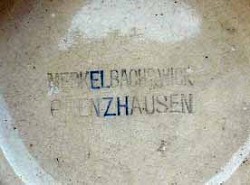
Impressed mark, very similar to R. Merkelbach mark.
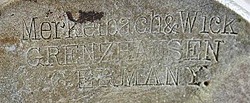
Impressed mark, very similar to R. Merkelbach mark.
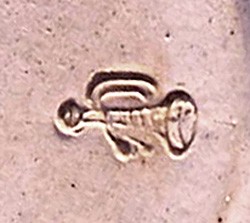
This mark is on the base of a 1 litre Merkelbach & Wick #488. The Bugle? mark was probably there to identify a currently unknown distributor. ×
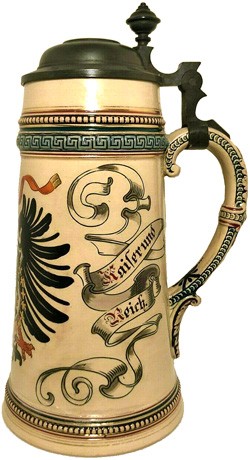
Left hand view of the stein shown centrally.
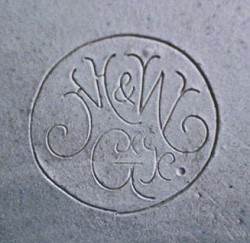
Impressed roundel (sheet metal punch). c.1879 - 1921.
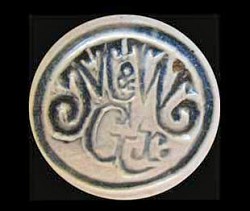
Impressed roundel (wooden punch). c.1879 - 1921.
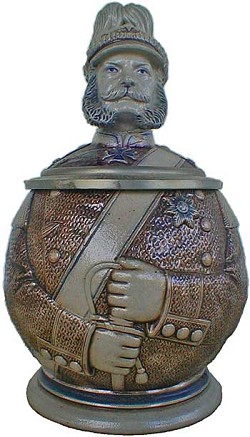
"Kaiser Wilhelm I". stein with M&W roundel on its base. Normally identified as FP-8.
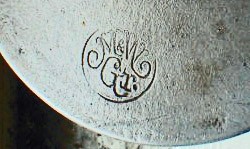
"Kaiser Wilhelm I". stein above with M&W roundel.
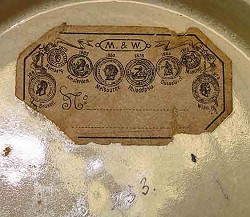
Paper label from sometime after 1883, on mould number #233.
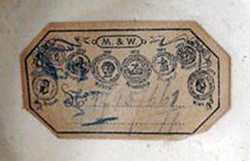
Another example of a paper label.
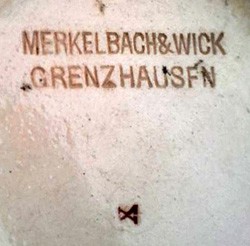
Impressed mark, very similar to R. Merkelbach mark, on 0.4 litre Augustinerbräu München, brewery stein.






















